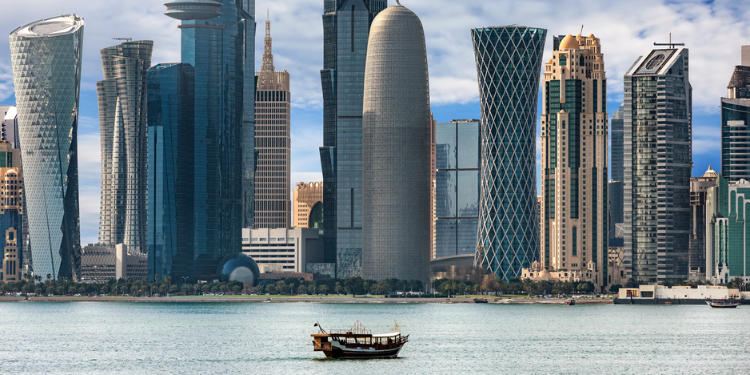The top five most competitive Arab countries

The region is home to some of the world's most competitive economies such as the UAE (17th on the Global Competitiveness Index), Qatar (25th), and Saudi Arabia (30th).
The United Arab Emirates is the first most competitive country in the Arab world thanks to its increased diversification, which makes the economy more resilient, and less dependent on the oil and gas prices. In early 2018, the UAE, along with Saudi Arabia, introduced the 5% VAT as part of a Gulf Cooperation Council agreement to narrow fiscal deficits due to the drop in oil prices. Even though the country's GDP is predicted to grow to 3.4%, to secure its progress, the UAE shouldn't only rely on its strong institutions and good infrastructure, but also incorporate the latest digital technologies and upgrade the education system.
Unlike the UAE, Qatar, the second most competitive economy in the Arab world, was profoundly impacted by the drop of oil and gas prices, with a fiscal deficit of 4.1% of GDP in 2016 and a public debt of 47.6%. However, Qatar's reliable infrastructure, macroeconomic environment, high-quality health services and primary education are the country's main strengths. On the other hand, access to digital technologies and efficient higher education institutions should become Qatar's priority, if the nation is seriously interested in raising its competitiveness levels.
Saudi Arabia ranks third in the region — justifiably as it has taken several significant steps towards the diversification of its economy (e.g. adopted VAT), has created stable institutions, boasts good infrastructure and the largest market in the Arab world. However, its macroeconomy has deteriorated, and its labour market excludes large population groups such as women. Although higher-education enrollment is at 63%, workers aren't qualified due to the lack of an advanced education, which doesn't meet the contemporary economic needs.
Bahrain ranks 44th on the Global Competitiveness Index and fourth among the countries of the Arab world thanks to a favourable business environment, high-quality education system and professional training, and modern infrastructure. However, the macroeconomic environment and the small size of its market (the smallest in the region) are among Bahrain's most concerning weaknesses. The country's technological readiness has improved in the past ten years, as well as its innovation and entrepreneurship initiatives.
Kuwait (52nd on the global ranking) has been facing severe challenges due to the low oil prices, as it's heavily dependent on its resources. If the country wants to enter the global competitiveness game, should increase its innovation capacity by investing in higher education and training, and promoting a more inclusive labour market, which makes the best use of its human capital. What's worth noting is that Kuwait hasn't shown remarkable signs of progress; actually, there has been deterioration regarding technological readiness.
How can the Arab world become more competitive

For many years, the economy of the Arab region has been relying on exports of natural resources and foreign assistance, and most of the employment activity has been taking place in the public sector. Nowadays, it's clear that government control is not solving the problem of youth unemployment and inequality, both of which lead to widespread social frustration. Thus, the Arab world has to encourage the development of a dynamic and sophisticated private sector, which will offer employment opportunities to a growing working-age population — the growth is about five million people per year while the new jobs that are created are less than two and a half million.
According to calculations, by 2040 the working age population will reach 370 million people. To maintain the current, already high numbers of unemployment and labour force, the Arab region must create about 58 million new jobs in the next 20 years — a challenge which requires the collaboration of the public and private sectors for improvements in education, connectivity, and innovation. Half of the Arab population isn't connected to the internet, and the education system isn't promoting flexibility and creativity, or a critical mindset. In general, the region needs more investment in innovative and risky projects.
It's worth noting that some of the poorest countries regarding resources, such as Jordan, Lebanon, Morocco, and Tunisia are adapting better to the new economy trends by raising the quality of education, opening their policies to trade and foreign investment, and accommodating the needs of micro, small, and medium enterprises (MSMEs).
Sources :
- World Economic Forum : https://www.weforum.org/reports/arab-world-competitiveness-report-2018
















